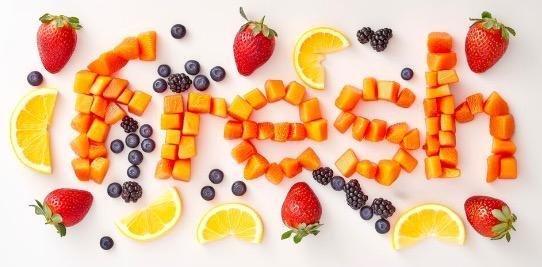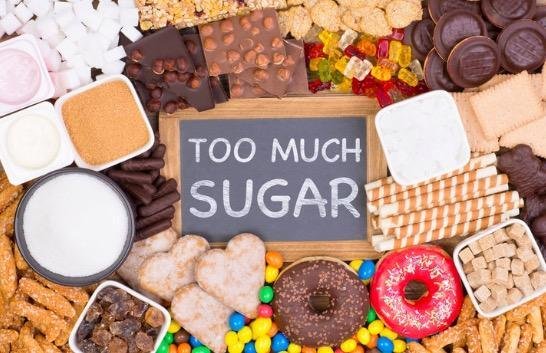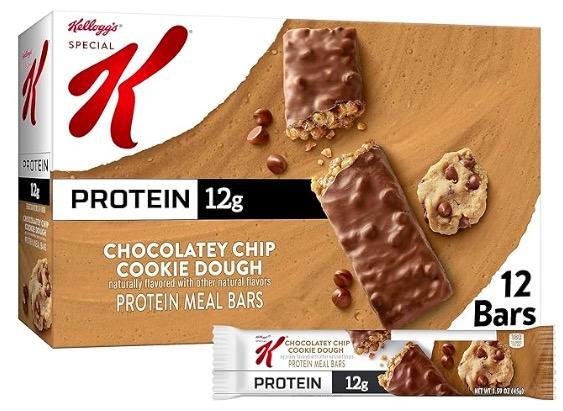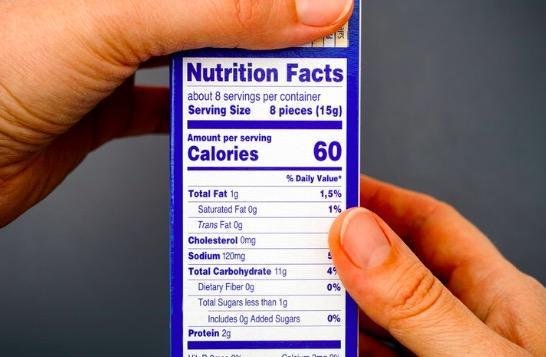Introduction:
Healthy eating on a budget doesn’t have to be a challenge. With a little knowledge and some smart choices, you can nourish your body with nutritious snacks without breaking the bank. This guide will help you navigate the world of “healthy” snacks, revealing the marketing tricks to avoid and the best options for fueling your body with wholesome ingredients.
The Rise of Healthy Snacks
In recent years, healthy snacks have exploded in popularity as more people embrace healthier lifestyles. These convenient bites offer a quick and easy way to fuel your body with essential nutrients, making healthy eating more accessible for those on the go or with busy schedules. From whole-grain crackers and fruit and nut bars to protein-packed bites and veggie chips, the options are seemingly endless.
However, it’s important to be aware that not all “healthy” snacks live up to their claims. Marketing tactics can often mislead consumers, making snacks appear more nutritious than they truly are. By understanding what to look for and what to avoid, you can make informed choices that support your health goals and your budget.
The Misconceptions of “Healthy” Snacks

While the term “healthy” may seem like a straightforward indicator, it’s crucial to look beyond the label and examine the ingredients list. Many snacks are marketed as healthy or natural, but a closer inspection often reveals hidden sugars, unhealthy fats, and artificial ingredients. These additives may not only diminish the nutritional value of the snack but can also negatively impact your health over time.
Another misconception is that healthy snacks are inherently expensive. While some specialty health food brands can be pricey, there are plenty of affordable options available. Whole, unprocessed foods like fruits, vegetables, nuts, seeds, and yogurt are nutrient-dense and often more budget-friendly than their packaged counterparts.
What to Look For in Healthy Snacks

- Nutrient-Rich Ingredients: Prioritize snacks made with whole, minimally processed ingredients. Look for options that include fruits, vegetables, whole grains, nuts, seeds, and lean protein sources. These foods provide essential vitamins, minerals, fiber, and healthy fats that support your overall well-being.
- Minimal Added Sugars and Artificial Ingredients: Avoid snacks with excessive added sugars, artificial sweeteners, colors, and flavors. These additives offer little nutritional value and can contribute to health issues like weight gain, blood sugar fluctuations, and even chronic diseases.
- Balanced Macronutrients: A balanced snack should contain a mix of carbohydrates, protein, and healthy fats. This combination helps stabilize blood sugar levels, promotes satiety, and provides sustained energy throughout the day.
- Portion Control: Even healthy snacks should be consumed in moderation. Pay attention to serving sizes and avoid mindless snacking. Listen to your body’s hunger and fullness cues to maintain a healthy relationship with food.
What to Avoid in Healthy Snacks

- High in Sugar: Many snacks, even those labeled as “healthy,” can be loaded with added sugars. These can contribute to weight gain and other health problems. Opt for snacks with naturally occurring sugars from fruits or those with minimal added sweeteners like honey or maple syrup.
- Artificial Ingredients: Artificial sweeteners, colors, flavors, and preservatives offer no nutritional value and may have negative health impacts. Choose snacks with whole, natural ingredients whenever possible.
- Unhealthy Fats: Some snacks may be low in sugar but high in unhealthy fats like trans fats or saturated fats. These fats can increase your risk of heart disease and other chronic conditions. Choose snacks with heart-healthy fats from sources like avocados, nuts, seeds, and olive oil.
- Excessive Sodium: Many packaged snacks are hidden sources of sodium, which can contribute to high blood pressure and cardiovascular problems. Look for low-sodium options or choose unsalted varieties.
How Unhealthy Snacks Sabotage Your Fitness Goals and Weight Loss

While healthy snacks can be your ally in maintaining energy levels and supporting your fitness journey, unhealthy snacks can quickly derail your progress. Indulging in sugary, processed treats or high-fat snacks can sabotage your efforts to reach your fitness goals in several ways:
- Excess Calories & Weight Gain: Unhealthy snacks are often laden with empty calories, providing minimal nutritional value while contributing significantly to your daily calorie intake. Even seemingly small indulgences can lead to a calorie surplus, hindering weight loss or muscle gain goals.
- Blood Sugar Rollercoaster and Cravings: Snacks high in sugar and refined carbohydrates can trigger rapid spikes and crashes in your blood sugar levels. This rollercoaster not only disrupts your energy levels but also fuels cravings for more sugary foods, making it harder to maintain a healthy eating pattern.
- Nutrient Deficiencies and Hunger: Unhealthy snacks are typically low in essential nutrients like vitamins, minerals, and fiber. Relying on these snacks can leave you feeling hungry and unsatisfied, leading to a cycle of unhealthy food choices and potential overeating.
- Poor Exercise Performance: Fueling your body with unhealthy snacks can compromise your energy and stamina during workouts. This not only impacts your performance but also makes it harder to achieve your fitness goals effectively.
- Impaired Muscle Growth and Recovery: Unhealthy snacks often lack the protein and other nutrients essential for muscle repair and growth. This can delay recovery time after workouts and limit your ability to build muscle mass.
The Bottom Line:
Choosing healthy snacks is not just about avoiding empty calories and unhealthy ingredients; it’s a crucial aspect of fueling your body for optimal performance, supporting your workouts, and maximizing your results. By making mindful choices and opting for nutritious snacks, you’ll be well on your way to achieving your fitness goals, maintaining a healthy weight, and feeling your best.
Where to Buy Healthy Snacks: From Grocery Aisles to Online Stores

Finding healthy snacks is easier than ever with numerous options available both online and in-store.
- Grocery Stores: Most major grocery stores now offer a wide selection of healthy snacks, often in dedicated sections like the produce aisle, bulk bins, or health food section. Look for fresh fruits and vegetables, nuts, seeds, yogurt, and whole-grain crackers.
- Health Food Stores: Specialty health food stores like Whole Foods Market or local health food shops typically have a wider variety of healthy snacks, including organic, gluten-free, and vegan options.
- Online Retailers: Online platforms like Amazon, Thrive Market, and brand-specific websites offer a convenient way to discover new healthy snacks and have them delivered to your doorstep.
Unprocessed Healthy Snacks: The Purest Fuel
For maximum nutritional value, choose minimally processed snacks packed with wholesome ingredients:
- Fruits and Vegetables: Nature’s candy! Fruits and veggies are naturally low in calories, high in fiber, and packed with vitamins, minerals, and antioxidants. They come in a rainbow of colors and flavors, offering a satisfying sweetness without added sugars. For a little extra flavor and protein, pair your veggies with a healthy dip like hummus or guacamole.
- Nuts and Seeds: These tiny powerhouses are packed with healthy fats, protein, and fiber, making them a satiating and energizing snack. They’re also a great source of vitamin E and magnesium, both of which are important for overall health. Just remember, they are calorie-dense, so be mindful of your portion sizes.
- Hard-Boiled Eggs: Eggs are a nutritional superstar, providing a complete protein source and a wealth of essential vitamins and minerals. They’re also rich in choline, a nutrient vital for brain health. Hard-boiled eggs are incredibly convenient to grab on the go and can be seasoned with a sprinkle of salt and pepper for extra flavor.
My Top 3 Picks: Guilt-Free Processed Snacks for Healthy Snacking
While I advocate for whole, unprocessed snacks, I also have moments of weakness where I just want to snack on something that tastes really good. And for that, I have a few “acceptably flawed” yet semi-healthy processed options that still align with my health goals. Here’s the breakdown of my top three picks, with nutritional info and a comparison to less healthy snack alternatives:
1. Kellogg’s Special K Protein Meal Bars, Chocolatey Chip Cookie Dough:

- Nutritional Breakdown (per bar): 190 calories, 7g fat, 20g carbs (5g fiber, 11g sugar), 12g protein
- Pros: Convenient, portable, decent amount of protein and fiber for a meal replacement bar, satisfies that cookie dough craving. I really like that the protein-to-fat ratio is 2:1, but more importantly, these taste so good that you’ll feel less guilty even though you know you could be eating much worse.
- Cons: Higher in sugar than other options, contains artificial sweeteners.
- vs. Chocolate Chip Cookie: One bar has similar calories to a medium cookie but offers more protein and fiber and less fat, potentially keeping you fuller longer.
2. Trader Joe’s Pretzel Slims:

- Nutritional Breakdown (per serving – about 20 pretzels): 100 calories, 0g fat, 22g carbs (2g fiber, 1g sugar), 4g protein
- Pros: Low in calories, fat-free, satisfying salty crunch, good source of whole grains, and affordable at $2.50 per bag.
- Cons: Not very filling on its own, can be easy to overeat.
- vs. Potato Chips: A serving of pretzel slims has fewer calories and fat than an equivalent serving of potato chips, making it a healthier alternative for your salty cravings.
3. Crunchmaster Protein Snack Crackers:

- Nutritional Breakdown (per serving – 6 crackers): 140 calories, 5g fat, 17g carbs (3g fiber, 0g sugar), 7g protein
- Pros: Good source of protein and fiber, gluten-free, various flavors available. They taste great and even better when you add some low-fat cheese.
- Cons: Can be a bit dry, higher in calories than some other cracker options.
- vs. Crackers: While similar in calories to other crackers, Crunchmaster’s protein crackers offer a significant protein boost, making them a more satisfying and filling snack.
Decoding the Nutrition Label: Your Guide to Smart Snacking

Reading and understanding nutrition labels is essential for making informed choices about your snacks. Here are a few key things to look for:
- Serving Size: Pay attention to the serving size listed on the label, as it can vary significantly between products and influence calorie and nutrient content.
- Calories: Compare calorie counts to your overall daily calorie needs and goals for weight management or fitness.
- Macronutrient Ratio: Aim for a balance of carbohydrates, protein, and healthy fats. A good rule of thumb for a healthy snack is to look for a protein-to-fat ratio of at least 1:1, meaning the grams of protein should be equal to or greater than the grams of fat.
- Sugar Content: Be mindful of added sugars. Aim for snacks with no more than 10 grams of sugar per serving or choose options with natural sweeteners.
- Fiber Content: Choose snacks with at least 3 grams of fiber per serving to promote satiety and digestive health.
Disclaimer: This information is not intended as a substitute for professional medical advice. It’s always best to consult with your doctor or a registered dietitian to determine the best dietary choices for your individual needs and health goals.
Conclusion
Choosing healthy snacks is a crucial step towards a balanced diet and overall well-being. By focusing on nutrient-rich, minimally processed ingredients, avoiding added sugars and artificial ingredients, and practicing portion control, you can make choices that nourish your body and taste good. Remember, it’s not about being perfect; it’s about making conscious decisions that support your health goals and lifestyle. With a little knowledge and effort, you can enjoy a wide variety of delicious and nutritious snacks that fit within your budget.









